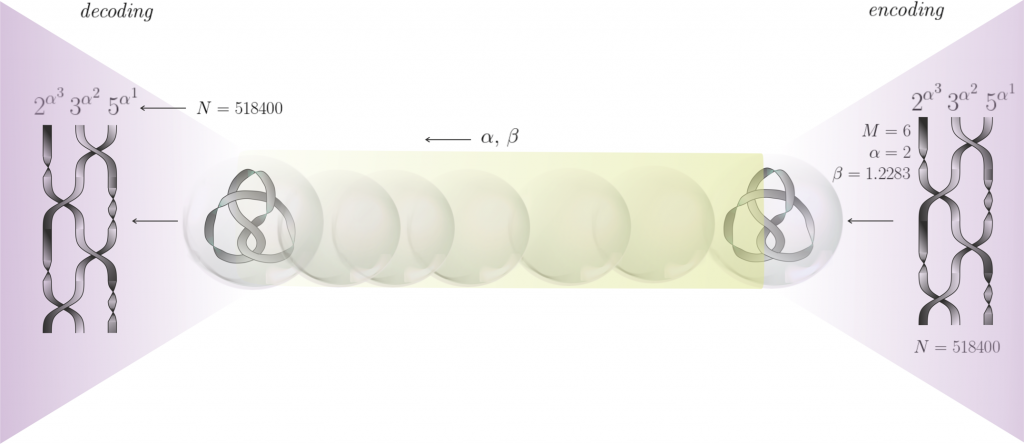It’s all linked: Dr. Eli Cohen and his colleagues developed a new encryption method using optical framed knots

Knot theory is a mathematical field that greatly affected physics, and vice versa, and was discovered to have a great impact on numerous, versatile avenues in science. In laymen’s terms, knots theory describes what happens when we take a string and begin tangling it with itself. The resulting knot has invariant features that do not change even when shifted, rotated, stretched, or squeezed. Major discontinuous changes such as cutting the string or passing it through itself are required in order to destroy these characteristics. That is why these knots, and particularly their braid representation, are relatively stable and resistant to error, so they present an innovative method of information processing, especially in the quantum world. Collaborative research between Eli Cohen of the Faculty of Engineering at Bar Ilan, Prof. Avishy Carmi of Ben Gurion University, and several researchers from the University of Ottawa, headed by Prof. Ebrahim Karimi, demonstrated for the first time framed knots using an optical setup, which was first applied for purposes of secure communications. An article on the research and its outcomes was recently published in Nature Communications.
This collaboration started in 2018, during the International Conferences on New Frontiers in Physics, a meeting of researchers from various scientific communities, after a talk by Prof. Karimi. It then grew through successful experiments by talented students at Prof. Karimi’s lab at the University of Ottawa. “We used tools from quantum theory to design the theoretical model, but in fact, the optical system was a classical one. We’re only now working with Prof. Karimi on demonstrating it through quantum optics,” explains Dr. Cohen. “The team was able to successfully create a new type of knot that was never created in a lab before, and we did it using structured light, a field in which Prof. Karimi’s lab is a world leader. The polarization of the light and its spatial structure created a new type of knot in space. The experiment and subsequent article show how one can securely code information within framed knots by using their braid presentation, send them across different parties, and then perform the decoding. This means that if I want to send a message, I encode it into the framed knot and send a knotted beam of light which is itself the message. Only the other side, the recipient, knows how to unravel the embedded structure, represent it using suitable braids and decode the message. In other words, this is a new method of encryption.”
“The key advantage of this method is that due to the invariant properties that only change if the knot is being cut, this communication is more durable and robust against disruption and noise. Even if the sender, receiver, or medium itself distorts the message, it would still be legible. Even if someone was to maliciously try to bend the knot or distort it, causing it to shrink or expand, the information would still be fully available and readable. Due to the proposed protocol, a hostile entity could intercept the knot, but the only damage that could be done is destroying it; the message cannot be opened and read.”
This is the first time that a practical application of optical framed knots is proposed; up until today, it has been a fascinating multidisciplinary field of research, but apparently without any practical applications. Dr. Cohen and his colleagues hope it will open up doors to new applications in the classical and quantum worlds. “One application we’re hoping to implement in the near future,” says Dr. Cohen, “is quantum money: a coin that is in fact a quantum state encoded on a particle; it can be transferred from one person to the next and assure its value, but it cannot be forged.”
The researchers wish to thank Profs. Sonia Kabana and Larissa Bravina for organizing the conference in which the collaboration formed, and for their important contribution to the scientific community over the years.
Last Updated Date : 11/11/2020



